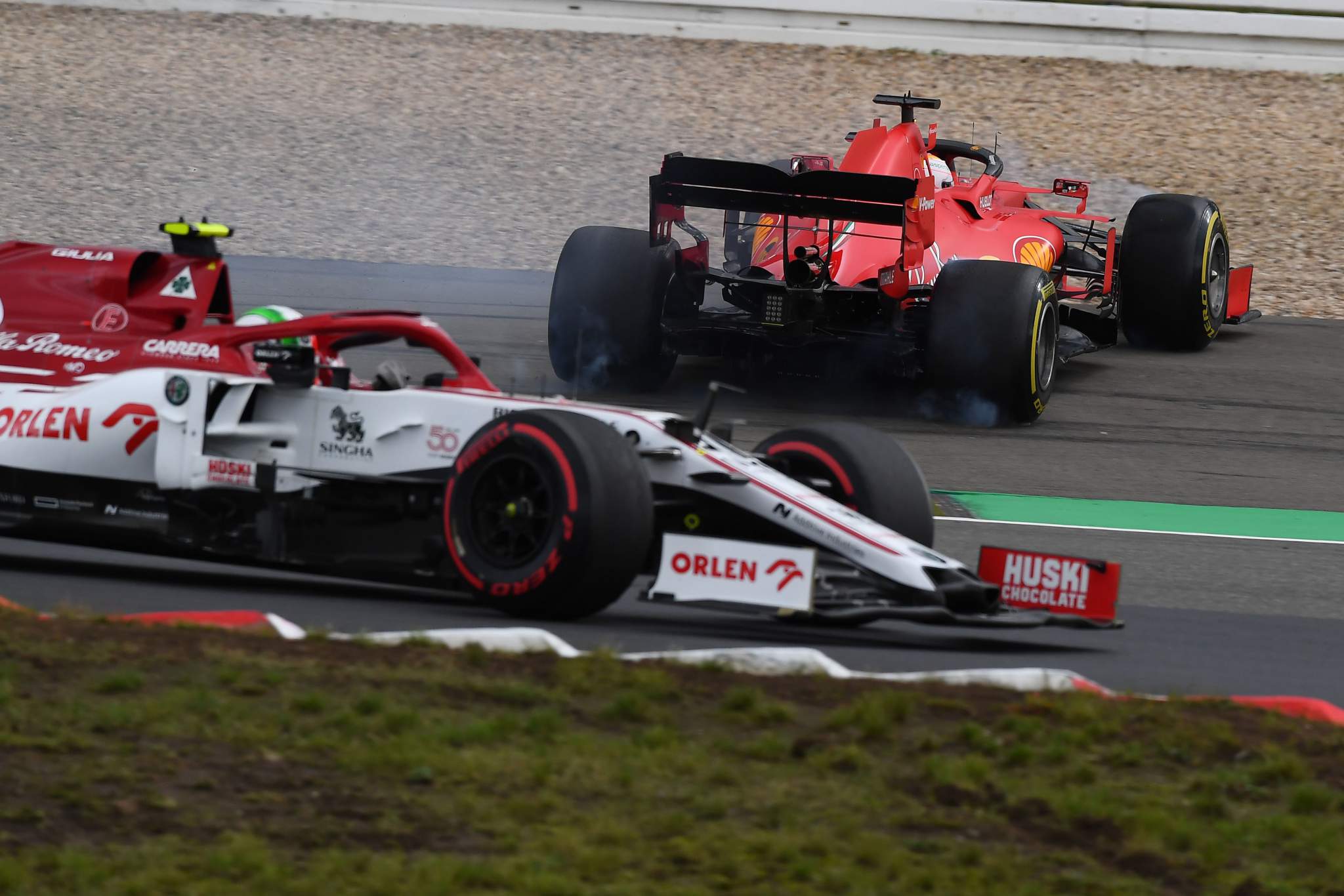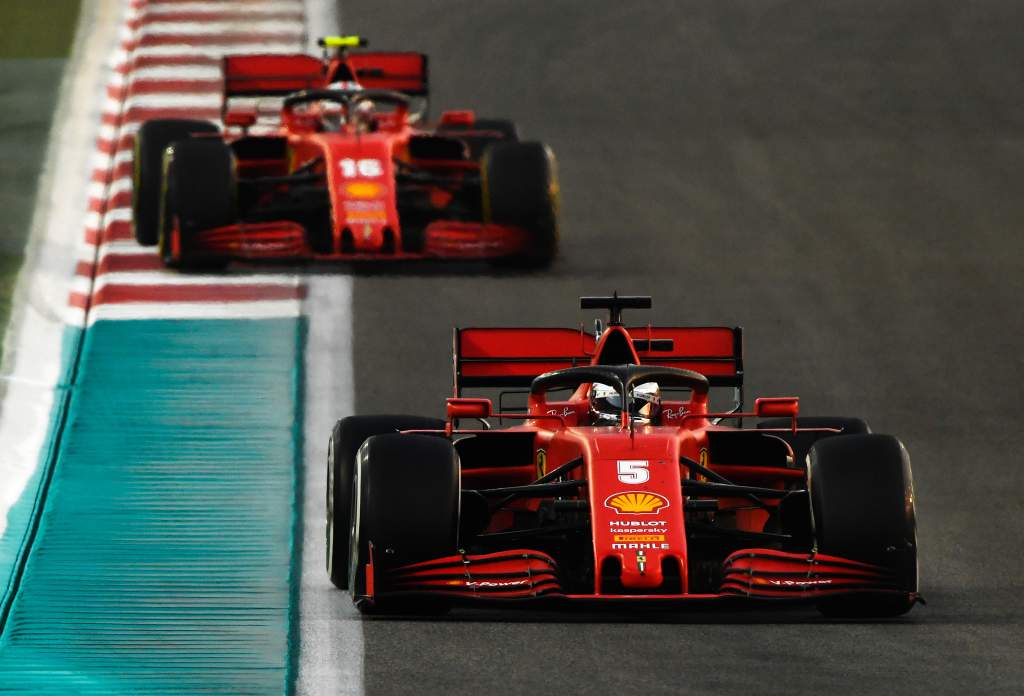Up Next

“It was the Scuderia’s worst season since 1980,” accepts Mattia Binotto, referencing the sixth place in the constructors’ championship.
Forty years ago Ferrari suffered a desperately uncompetitive year because of a technical limitation imposed by the laws of physics – the exit to its ground effect venturis were blocked by the flat-12 engine.
In 2020 it was a technical limitation imposed by the governing body, as a response to its investigations of Ferrari’s 2019 power unit. In addition to the regulation stipulation of a second fuel flow measuring device for 2020, there followed also some very specific Technical Directives aimed squarely at Ferrari’s previous interpretation of the fuel flow regulations.
Regardless of the ‘private agreement’ reached between the FIA and Ferrari over the matter, the net result of the tech directives was the loss of around 65bhp for Ferrari, a way bigger loss than suffered by any of the other three power unit manufacturers (with Mercedes actually making a significant gain). What had been an estimated 25bhp advantage over the field for Ferrari in 2019 became a shortfall of over 40bhp. It was a solid last in the power rankings.
These were enormous losses imposed at short notice. It defined Ferrari’s season as picking up the wreckage from that doomsday hit and trying to scramble into some sort of respectable shape. Its ability to do that was then constrained by the power unit freeze put in place in response to the pandemic.
Its 2020 car, the SF1000, had been configured to address the downforce shortfall of the powerful 2019 car, even while accepting the inevitable cost in extra drag. But those calculations – upon which the whole change in emphasis of the design was made – were based upon the sort of power they enjoyed last year. Which resulted in a car that was far too draggy for the much lower power it actually had available in 2020.
What that also made for was a car wildly volatile in its form according to track layout: flat uncompetitive on power-sensitive tracks, occasionally semi-competitive on downforce-sensitive layouts. Although the car’s seasonal average qualifying was not so different to the likes of McLaren and Renault, its fluctuations around that average were much bigger.
There may also be a Charles Leclerc factor in that comparison – because on at least three occasions he dragged a one-off Q3 lap out of the car that beggared belief and undoubtedly flattered the car’s level hugely.
“If we had freedom to develop during the season,” says Binotto, “the power unit would be the first we would try to address. In terms of aero we would have done some more work, which has been limited by windtunnel limitations and simulation limitations.”
The unrounded nature of the car’s traits lent by its downforce sensitivity was made yet more volatile by a basic rear end instability. This was an entirely separate problem to the drag-downforce trade-off, but may have been made worse when the car was run in low-downforce trim to counter its excessive drag.

Sporting director Laurent Mekies expanded on this: “It would be wrong to think that all our difficulties came from that combination of power and concept. There were some issues not directly linked to the concept giving us the inconsistency in the car. So we were still getting the drag penalty but not the positive aspects which should have come with the concept. So we were fighting a sort of double penalty.
“The issues came from the rear end of the car. It doesn’t mean all of our issues were there but it was one of the key drivers in not giving us the consistency we wanted and as a result it may have been that we were not maximising other aspects of car dynamics because we were chasing some sort of a moving target with consistency.
“So we made some changes in the floor area, both front and rear and the diffuser to try to improve this aspect. It’s never one thing. There’s a lot of small changes around that to get the stability we wanted but that’s basically what happened.”
This series of upgrades were introduced by steps, beginning in Russia, through to Imola (rounds 10-13), with new rear wing endplates, turning vanes, barge boards, floor and diffuser.
According to Mekies, these changes were in the right direction but did not bring spectacular numbers. They did, though, have a greater positive impact than the numbers suggested, because the improvement in consistency allowed the drivers to get more from themselves over a single lap. This was particularly noticeable with Sebastian Vettel who had struggled badly in the first two-thirds of the season.
“It was no coincidence that as we improved the consistency, the gap [between Leclerc and Vettel] closed up significantly,” says Mekies.
It was against this backdrop that Vettel scored his only podium of the year, taking a last lap advantage of Leclerc running wide in his fight with Sergio Perez to claim third at Istanbul. Leclerc’s two podiums – in the opening race in Austria and at the British Grand Prix for round four – were very much against the run of competitive play and owed much to the driver.
Sixth place in the constructors championship was probably a fair representation of where the team was at – though it was under pressure for that position from AlphaTauri. It’s debatable whether that even made Ferrari the top Italian team in 2020, given that the Red Bull offshoot actually won a race.
“I realise I am not here indefinitely,” said Binotto on Friday in reference to the pressure he is under to put Ferrari back to the position of contenders rather than also-rans. “That depends a lot on our performance in the next seasons.”
The response to that off-season FIA body blow has generally been positive – in that the car was much better at the end of the year than at the beginning. But the full measure of that recovery can be more accurately gauged next year when freed from the freeze of the power unit and with tokens to spend on further rectifying the rear end (a new suspension is on the way).





